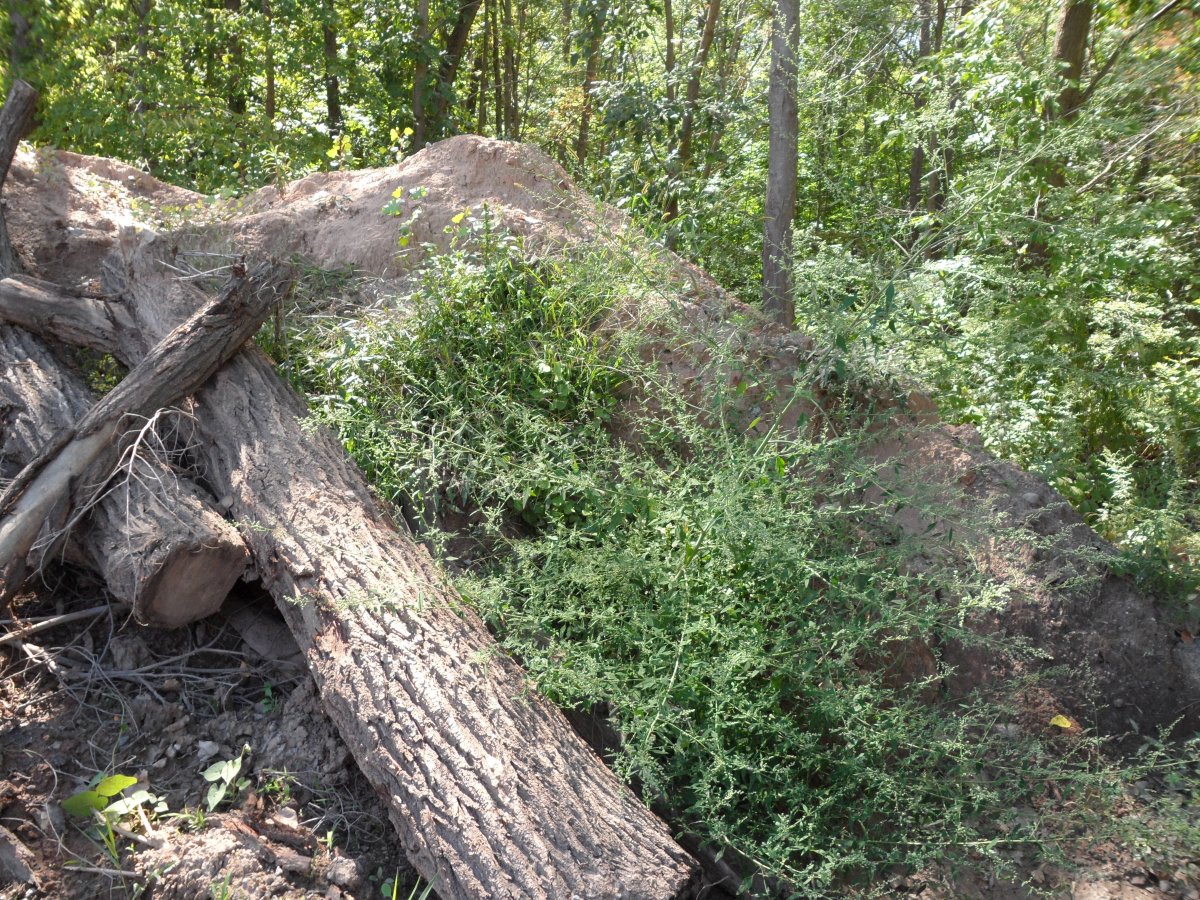Silencing Thundering Waters Forest?
Nov 2, 2016
Silencing Thundering Waters Forest?

Since 2008, there has been an ongoing struggle to protect a 500 acre, predominately old growth Carolinian swamp forest in Niagara Falls from urbanization. While opponents have so far been able to stop the biggest recent assault on the most diverse habitat in Canada, Thundering Waters Forest, home to such threatened species as old growth Black Gum trees, and Honey Locusts with massive thorns that are a relic of the Pleistocene, the scheme is still slowly proceeding through the review process. Part of the push to get development approval involves propagating a myth about good buffers around areas on the site which are off limits to bulldozers because of their protected wetland status.
Only about a third of the 500 acre Thundering Waters Forest is actually protected wetlands, and of this area two percent is threatened by roads. It is proposed to cut down three hundred acres of trees. Forest clearance - or carnage - on this monstrous magnitude in Carolinian Canada has not been seen since the backwoodsmen of the 19th century burnt out old growth forests for soap ashes.
The area is traditional territory of Iroquois (Haudenosaunee) and Ojibwa peoples. Treaties that effect the forest area are the Nanfan Treaty of 1701 (British crown and Iroquois), and the Treaties of Niagara of 1764 and 1784. There are ongoing land claims talks in the region.
Regarding the immediate fate of the forest, there is an attempt to lull to sleep the public, relavent review agencies, and municipal councillors by claiming the Thundering Waters wetlands will be protected by additional buffers. These are supposed to involve native bushes to protect wetland trees from storm water pollution.
The difference between the reality on the ground at Thundering Waters and what we see in consultants' reports is very stark. What the contrast points to is the difference between promises and reality. It is reminiscent of the Indigenous expression warning of those who “speak with forked tongue.”
The justification for the Thundering Waters assault is a document termed the draft “Characterization and Environmental Impact Study.” Although the report is a product of both Dougan Associates and C. Portt Associates, it clearly states that its “primary author” is Dr. Stephen Hill.
It stresses the strength of what is termed, “Buffers between the Provincially Significant Wetland (ie. Remaining forests) and the residential/commercial areas.” The report’s readers are reassured that these buffers will be protected by “re-vegetation of cleared areas with native species.” Such careful buffer plantings are supposed to “reduce the risk of contaminants such as heavy metals, salt, and pesticides reaching vernal pools.” A pledge is also made of pro-active planting of native species in buffer zones impact by development. This is said to “minimize the establishment on non-native species.”
Sweet words of re-assurance are contradicted by the tragic reality of what is on the ground. Although there are 500 acres still remaining of the Thundering Waters Forest, south of Oldfield Road, the area in 1992 was 800 acres in extent. There has been massive forest destruction north of Oldfield Road, for both a golf course and a residential development. This destruction of 300 acres of forest is the worst environmental mayhem experienced in Canada’s most species-diverse ecological region, the Carolinian life zone. The development here lacks any ecological sensitivity. It is just textbook Concrete Brutalism without, for instance, any bio-swales. Nothing but cement curbs and gutters will speed polluted water to the Niagara River, where it was formerly slowed down by vernal pools, rich habitat for species such as Wood Frog and the Blue Spotted Salamander. To facilitate development here a strip has been torn south of Oldfield Road, lined with utility poles. No buffer plantings have been put here and the ground remains barren.
North of Oldfield Road is a three acre forest, which is all that is left of a once 45 acre old growth swamp wetland forest. Once dominated by towering Pin Oaks, it was the best place in Niagara to observe the Grey Tree Frog, a charming species that lives in tree tops. The three acres is all that is left as a result of an Ontario Municipal Board (OMB) negotiated settlement that protects the habitat of a threatened vine, the Round-leaved Greenbrier.
What is distressing is seeing the barren and invasive-damaged buffer between the protective fence around the three-acre forest. Most of this land was disturbed three years ago and is still simply naked dirt. An environmentally dangerous exotic weed has become established, known as Phragmites. It is a terrible warning of what may happen soon south of Oldfield Road. Given the failure to plant appropriate native species such as Gray Dogwood, the “buffer” in the future will simply be an entry point for invasive, exotic species into an old growth forest.
The harsh reality on the ground is also shown by encroachment on the supposed 39-meter “buffers’' of Provincially Significant Wetlands in the vicinity of Ramsey Road. Here the trees in the protected wetland are being encircled and buried by truckloads of landfill. The recent photos, taken at the site, demonstrates this vividly.
Provincial wetland policy is effective in keeping development of protected areas. Its buffering policies however, are not effective. Regulators are not prepared for the costly legal battles to effectively enforce the law, despite vivid evidence is shown by these photos.
For more info check out the Paradise Project website or visit Save Thundering Waters Forest on Facebook.

